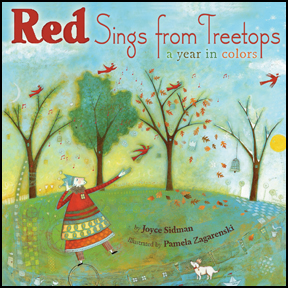BIBLIOGRAPHY
Stead, Rebecca. 2009. WHEN YOU REACH ME. New York, NY: Wendy Lamb Books. ISBN 0385906647
PLOT SUMMARY
WHEN YOU REACH ME is the story of Miranda, a sixth grader living in New York City in 1979. Miranda tries to discover the meaning behind a series of mysterious notes that seem to predict the future. While she is receiving and figuring out these notes, she also learns more about friends and growing up.
CRITICAL ANALYSIS
Stead's book seems to have two elements to it. The first is the fantasy element. It involves mysterious notes that appear to be from someone who can travel through time. As she reads her favorite book, "A Wrinkle in Time," she tries to discover if time travel is even possible and talks to some other classmates about it. The discussions about time travel are a little hard to follow, but I not too confusing to lose readers attention. The second element, which is more realistic, is about her day-to-day activities and interactions. Readers will relate to Miranda as she tries to figure out why her best friend won't talk to her anymore and as she tries to make new friends.
Even though this book is set 30 years in the past, readers will still be able to connect to the plot and the theme. I think there are enough similarities to the way students interacted back then and now that readers will not have a problem following the story.
REVIEW EXCERPTS
KIRKUS starred review: "When all the sidewalk characters from Miranda's Manhattan world converge amid mind-blowing revelations and cunning details, teen readers will circle back to the beginning and say,'Wow ... cool."
SCHOOL LIBRARY JOURNAL starred review: " This unusual, thought-provoking mystery will appeal to several types of readers.”
BOOKLIST starred review " "The mental gymnastics required of readers are invigorating; and the characters, children, and adults are honest bits of humanity no matter in what place or time their souls rest."
CONNECTIONS
*Have students write a paragraph about whether or not they think time travel is possible
*Have students write a paragraph about where they would go if time travel were possible.
Stead, Rebecca. 2009. WHEN YOU REACH ME. New York, NY: Wendy Lamb Books. ISBN 0385906647
PLOT SUMMARY
WHEN YOU REACH ME is the story of Miranda, a sixth grader living in New York City in 1979. Miranda tries to discover the meaning behind a series of mysterious notes that seem to predict the future. While she is receiving and figuring out these notes, she also learns more about friends and growing up.
CRITICAL ANALYSIS
Stead's book seems to have two elements to it. The first is the fantasy element. It involves mysterious notes that appear to be from someone who can travel through time. As she reads her favorite book, "A Wrinkle in Time," she tries to discover if time travel is even possible and talks to some other classmates about it. The discussions about time travel are a little hard to follow, but I not too confusing to lose readers attention. The second element, which is more realistic, is about her day-to-day activities and interactions. Readers will relate to Miranda as she tries to figure out why her best friend won't talk to her anymore and as she tries to make new friends.
Even though this book is set 30 years in the past, readers will still be able to connect to the plot and the theme. I think there are enough similarities to the way students interacted back then and now that readers will not have a problem following the story.
REVIEW EXCERPTS
KIRKUS starred review: "When all the sidewalk characters from Miranda's Manhattan world converge amid mind-blowing revelations and cunning details, teen readers will circle back to the beginning and say,'Wow ... cool."
SCHOOL LIBRARY JOURNAL starred review: " This unusual, thought-provoking mystery will appeal to several types of readers.”
BOOKLIST starred review " "The mental gymnastics required of readers are invigorating; and the characters, children, and adults are honest bits of humanity no matter in what place or time their souls rest."
CONNECTIONS
*Have students write a paragraph about whether or not they think time travel is possible
*Have students write a paragraph about where they would go if time travel were possible.

















